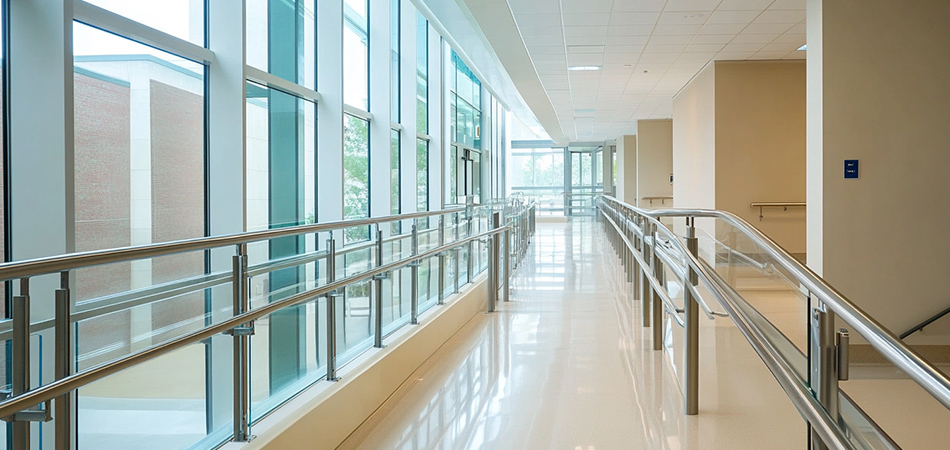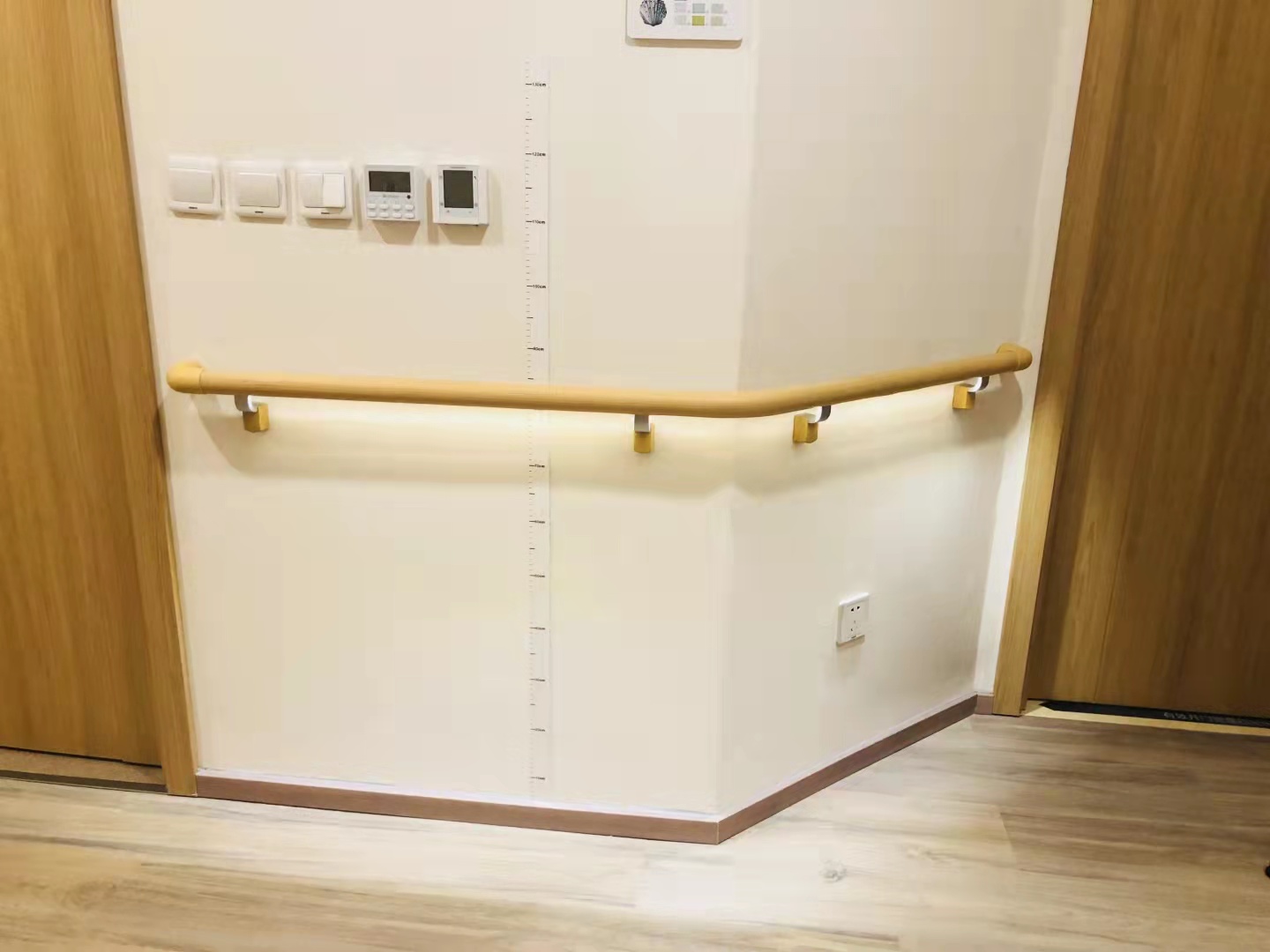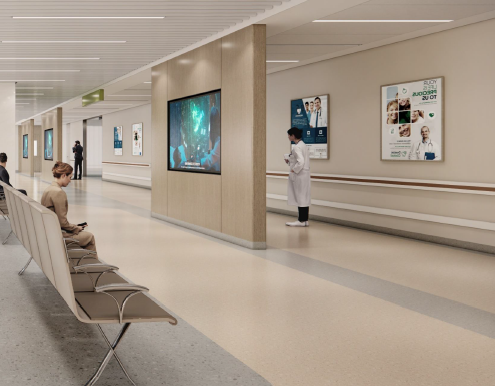 Service Hotline:13510328459
Service Hotline:13510328459
 205-206, 2nd Floor, Building 2, Xiazao Village Industrial Zone, Gaofeng Community, Dalang Street, Longhua District, Shenzhen City
205-206, 2nd Floor, Building 2, Xiazao Village Industrial Zone, Gaofeng Community, Dalang Street, Longhua District, Shenzhen City
 Service Hotline:13510328459
Service Hotline:13510328459
 205-206, 2nd Floor, Building 2, Xiazao Village Industrial Zone, Gaofeng Community, Dalang Street, Longhua District, Shenzhen City
205-206, 2nd Floor, Building 2, Xiazao Village Industrial Zone, Gaofeng Community, Dalang Street, Longhua District, Shenzhen City
Time:2025-08-28 Preview:
In hospital environments, where patient and staff safety is non-negotiable, even the smallest detail of a handrail—from its height to its stability—can impact daily operations and risk prevention. A handrail installed too high may be unusable for wheelchair users; one secured loosely could detach during use, causing injury. This is why Hospital Handrail Installation Standards are not just guidelines—they are the foundation of a safe, accessible medical space. As a leading provider of medical facility solutions, ECONLEY TECHNOLOGY adheres strictly to global Hospital Handrail Installation Standards in every project, delivering handrails (including hospital and elderly care home variants) that meet regulatory requirements while enhancing usability. Beyond handrails, we also supply hospital curtains/screens, hospital curtain tracks, antibacterial resin panels, and custom antibacterial panels—all installed with the same commitment to compliance and safety that defines our approach to Hospital Handrail Installation Standards.
Hospital Handrail Installation Standards exist to address three critical priorities in healthcare settings: user accessibility, structural safety, and regulatory compliance. Ignoring these standards can lead to hazards that compromise patient well-being and expose facilities to legal risks.
First, accessibility for all users is at the core of these standards. Hospitals serve diverse populations—wheelchair users, elderly patients with limited mobility, children, and staff with varying physical needs—and handrails must be installed to accommodate everyone. For example, Hospital Handrail Installation Standards typically specify height ranges that work for both standing users and those seated in wheelchairs, ensuring no one is excluded from safe movement. They also require consistent spacing between handrails and walls, preventing gaps that could trap fingers or mobility aids. Without these guidelines, a handrail might be installed too low for standing users or too high for those in wheelchairs, creating barriers instead of support.
Second, structural safety is a non-negotiable component of Hospital Handrail Installation Standards. Handrails must withstand repeated use—from patients leaning on them for balance to staff gripping them while pushing heavy carts—and must remain securely attached to walls or supports. Standards define requirements for fastener strength, wall anchoring, and weight-bearing capacity, ensuring handrails don’t loosen or detach over time. For instance, a handrail in an emergency department corridor must hold significant weight without shifting, even during chaotic situations like patient transfers. Failing to meet these safety standards can result in falls, injuries, or costly repairs—all of which are avoidable with proper compliance.
Third, regulatory compliance protects facilities from legal and operational risks. Most countries have strict healthcare safety codes (such as the U.S. ADA Standards or EU EN 14183) that mandate adherence to Hospital Handrail Installation Standards. Non-compliance can lead to fines, license penalties, or even legal action if an injury occurs. It also affects a hospital’s ability to receive accreditation—critical for funding and public trust. By following these standards, facilities demonstrate their commitment to patient safety and ensure smooth operations without regulatory disruptions.

At ECONLEY TECHNOLOGY, compliance with Hospital Handrail Installation Standards is not an afterthought—it’s integrated into every step of our process, from pre-installation planning to post-installation verification. Our approach ensures that every handrail we install is safe, accessible, and fully compliant.
First, we start with rigorous pre-installation assessments. Before any work begins, our team conducts on-site surveys to evaluate the corridor layout, wall structure, and user needs. This includes measuring wall thickness to determine appropriate fasteners (critical for meeting weight-bearing standards) and mapping high-traffic areas to align handrail placement with user flow. For example, in a senior care wing, we might adjust installation plans to add extra handrail supports near doorways—going beyond basic Hospital Handrail Installation Standards to address the specific needs of elderly users. We also consult with facility managers to ensure alignment with local regulatory codes, avoiding last-minute adjustments that delay projects.
Second, we use trained, certified installers who specialize in medical facility projects. Unlike general contractors who may be unfamiliar with the nuances of Hospital Handrail Installation Standards, our team undergoes regular training on global safety codes and best practices. They understand how to properly anchor handrails to different wall types (drywall, concrete, or tile) while maintaining structural integrity, and they follow strict quality checks during installation—such as testing handrail stability before completing the project. This expertise ensures that every handrail meets or exceeds standards, with no shortcuts that compromise safety.
Third, we conduct post-installation verification to confirm compliance. After installation, our team performs a comprehensive inspection: checking handrail height and spacing against Hospital Handrail Installation Standards, testing weight-bearing capacity, and verifying that all fasteners are secure. We also provide a detailed compliance report to the facility, including photos and test results, which can be used for accreditation audits. This transparency gives hospitals peace of mind, knowing their handrails are fully compliant and safe for use.

While Hospital Handrail Installation Standards are central to our handrail projects, ECONLEY applies the same commitment to compliance across all our products. This ensures that every element of a medical facility works together to create a safe, cohesive space.
For example, our elderly care home handrails are installed using the same Hospital Handrail Installation Standards as hospital variants but with additional adaptations—such as lower height options for users with limited mobility—while still meeting regulatory requirements. Our hospital curtains/screens and curtain tracks are installed to avoid interfering with handrail access, ensuring corridors remain navigable for wheelchair users. Even our antibacterial resin panels are mounted with spacing that aligns with safety standards, preventing gaps that could harbor germs or create tripping hazards.
This holistic approach means hospitals don’t have to coordinate with multiple suppliers to ensure compliance—ECONLEY handles everything, from handrails to wall panels, with a unified focus on Hospital Handrail Installation Standards and overall safety.
A recent project with a regional hospital in eastern China illustrates the value of our adherence to Hospital Handrail Installation Standards. The hospital was renovating its rehabilitation ward and needed handrails that would comply with China’s GB 50763-2012 Healthcare Building Design Code (which references strict handrail installation standards) while supporting patients recovering from strokes and injuries.
Our team began with a pre-installation assessment, noting that many patients would use walkers or canes—so we adjusted handrail spacing to accommodate these aids, while still meeting the code’s height requirements. Our certified installers used heavy-duty fasteners to anchor handrails to the ward’s concrete walls, and post-installation tests confirmed that each handrail could support the required weight without shifting.
Six months later, the hospital’s rehabilitation director reported: “The handrails have been a game-changer for our patients. They feel safe using them, and we’ve had zero issues with compliance during inspections. ECONLEY’s focus on Hospital Handrail Installation Standards made the entire process smooth, and their attention to our patients’ needs went above and beyond.”

For hospitals seeking a partner that prioritizes Hospital Handrail Installation Standards, ECONLEY TECHNOLOGY offers three key advantages:
Expertise in Medical Compliance: Our team understands the unique regulatory landscape of healthcare facilities, ensuring handrails meet local and global standards.
End-to-End Quality Control: From pre-installation assessments to post-installation verification, we leave no room for errors that compromise safety or compliance.
Holistic Facility Solutions: We extend compliance to all our products, creating a unified, safe space that supports patients and staff.
